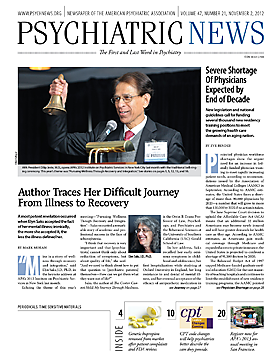Bullying has been a hot topic of discussion for the better part of the past decade, but research is only just now beginning to elucidate the specific characteristics of those who bully and those who are bullied. Paul Sterzing, Ph.D., M.S.S.W., and his colleagues have recently sought to determine how many adolescents with an autism spectrum disorder (ASD) are affected by bullying.
Sterzing, a recent graduate of the George Warren Brown School of Social Work at Washington University in St. Louis, is now an assistant professor at the School of Social Welfare at the University of California, Berkeley. He and colleagues based at Washington University published in the online September 3 Archives of Pediatric and Adolescent Medicine a report that delves more deeply into how adolescents with an ASD experience bullying—as victims, as perpetrators, and as “victims/perpetrators,” those children who are both the bully and the bullied.
Their study sample consisted of the participants in the National Longitudinal Transition Study 2, a 10-year, five-wave prospective study of adolescents receiving special-education services. The survey was conducted by SRI International for the U.S. Department of Education. The study identified 1,100 students in the autism category, and Sterzing and his colleagues analyzed interviews with 920 of their parents and analyzed data from the Student’s School Program Survey and the School Characteristics Survey to evaluate the students. The parent report was used to assess age, sex, race, ethnicity, attention-deficit/hyperactivity disorder (ADHD), income level, social skills, and conversational ability of the adolescents.
They found that the rate of bullying victimization for adolescents with an ASD (46.3 percent) was substantially higher than the national prevalence estimate for the general adolescent population (10.6 percent). The rates of perpetration of bullying (14.8 percent) and victimization/perpetration (8.9 percent), however, were roughly equivalent to national estimates found among typically developing adolescents.
Adolescents with an ASD and comorbid ADHD were more likely to be victims, bullies, and victim/perpetrators. They found as well that adolescents with greater social skills were significantly less likely to experience victimization, a finding Sterzing and colleagues said was consistent with prior research. Conversational ability, however, correlated strongly with victimization. Compared with adolescents with no conversational ability, adolescents with some level of conversational ability were significantly more likely to be victimized.
The researchers were somewhat skeptical of this finding, however, theorizing that adolescents with no conversational ability might be protected by such institutional measures as lower teacher-student classroom ratios, or that school staff might not be informing parents about their child’s bullying involvement.
Sterzing and colleagues said their work demonstrated that school-based bullying interventions need to target the core deficits of ASD, such as conversational ability and social skills, and the presence of comorbid conditions such as ADHD.
“Future bullying interventions also need to address the higher rates of victimization that occur in general education settings by increasing social integration into protective peer groups and increasing the empathy and social skills of typically developing students toward their peers with an ASD,” they concluded.
The study was supported by the National Institute of Mental Health, the Organization for Autism Research, and Autism Speaks.


